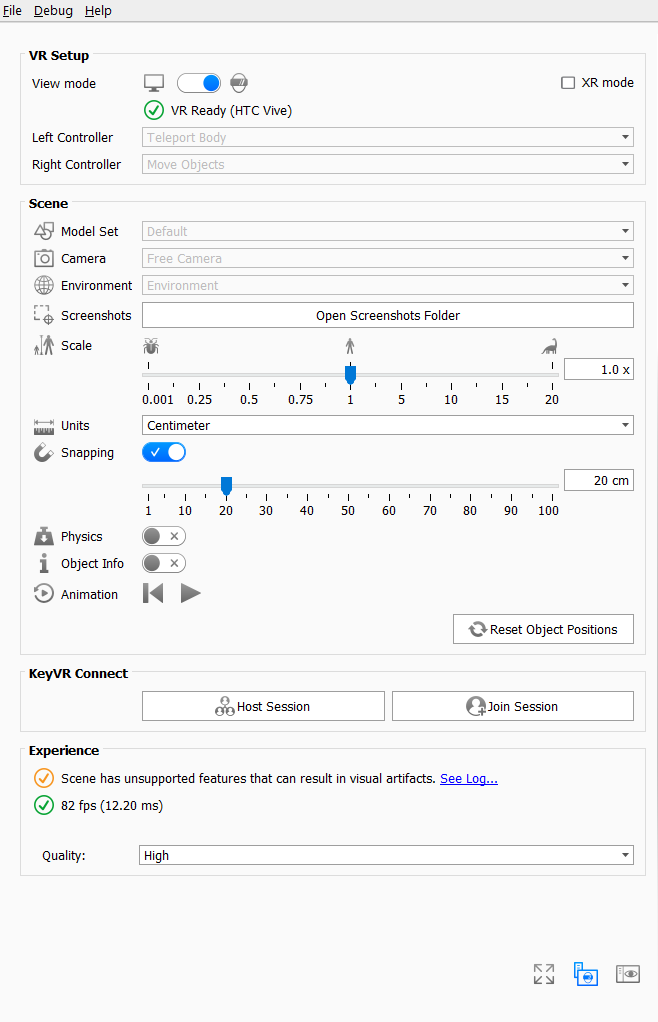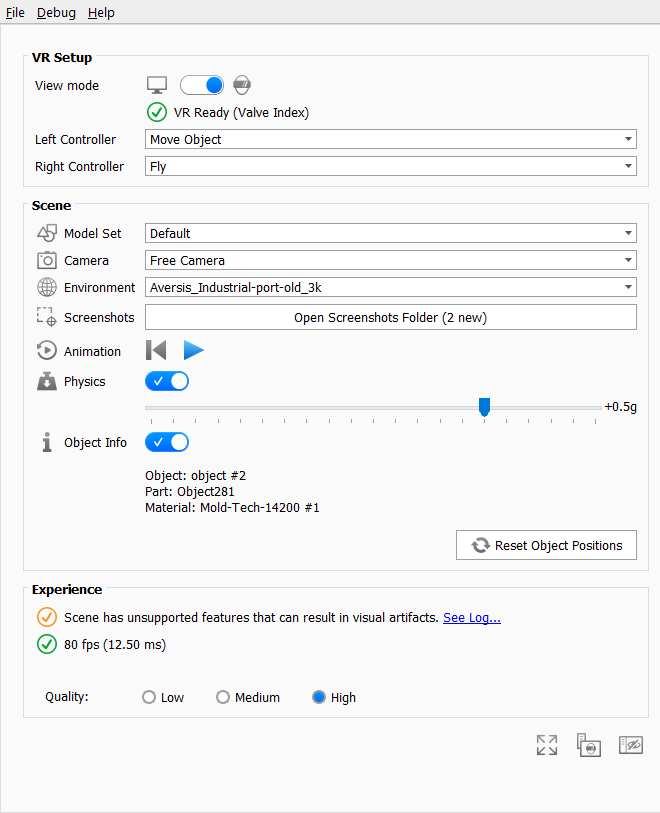Open Recent Lists the most recent scenes you have used.
Bake Toggles whether the scene you launch will be baked. When baking is enabled, KeyVR will cache the baking data.
Remove Baking cache: Enables you to clear the baking data.
Preferences… Launches the Preferences dialog
Activate license… This option enables you to activate a different license
XR mode: Toggels the XR mode. When XR mode is enabled, the environment is replaced with a feed from the HMD’s external camera - allowing you experience your model in your current surroundings. This option is available if you HMD has an external camera.
Snapping: Toggle snapping. Used in the precise move tool, measurements and in-hand object rotating.
Snapping scale: When snapping is enabled, you can adjust the scale of the grid it snaps toScale: Enables you set your size in the VR space. The Slider takes its offset in an average height of a human and lets you scale between 1/1000x and 20x this height.
Units: Set the units used for the Measure tool and Snapping.
Animation: If the BIP file contains animation the animation can be started/paused and reset to start.
Here you can start or join a Connect session. Learn more about KeyVR Connect.

